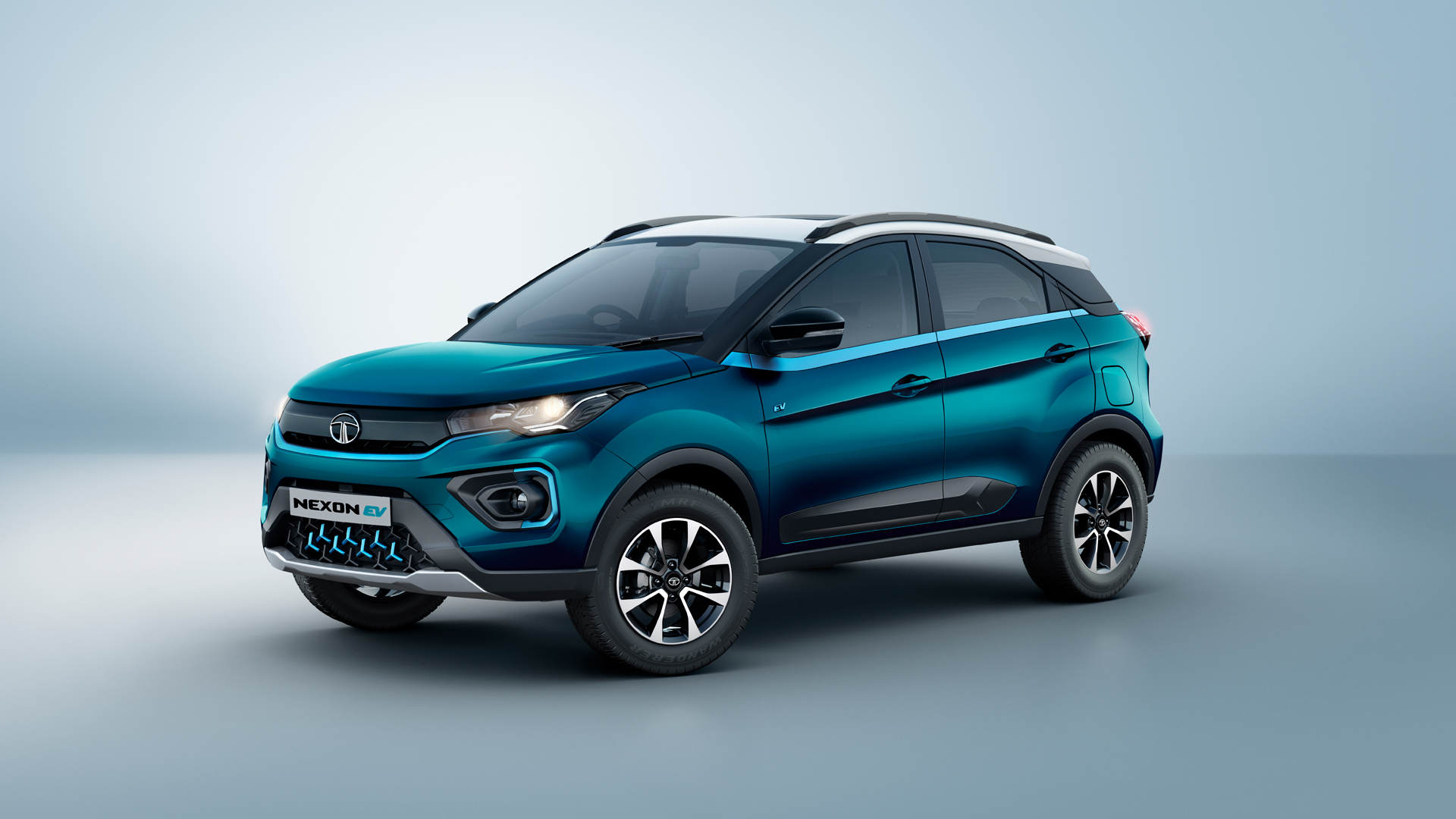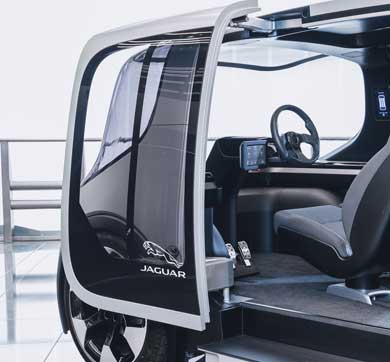June 2021 | 1422 words | 6-minute read
The Tata group has made some of its most significant breakthroughs when it stepped up to answer the call of the nation.
Tata Steel was set up because our founder, Jamsetji Tata, was convinced that no nation would be secure unless it produced its own steel.
The Taj Mahal Palace was built to return Bombay, then struggling to emerge from a devastating plague epidemic to its former prestige.
The Indian Institute of Science was envisioned so that an emerging nation’s need for scientific talent would be fulfilled.
The hydroelectric power projects served industries in Bombay by providing clean energy and helping reduce pollution from coal-powered factories.
So, it is with the Electric Vehicle (EV) revolution in India.
Leading the EV revolution in India
The Indian auto industry is in the midst of a major transition to electric. The transition comes at a critical time; not only are many Indian cities reeling under air pollution but there is also a need to reduce dependence on imported fossil fuels and attain energy security.
Stricter emission norms make the case for EVs stronger, as do cheaper batteries that help reduce the cost gap between EVs and internal combustion-powered (IC) vehicles.
Over the last two years, there has been progressive action by the ecosystem players towards overcoming barriers of range anxiety, lack of charging infrastructure, and higher prices. Tata Motors is playing a critical role in efforts towards achieving this goal.
Tata Motors leads the passenger electric vehicle segment with a market share of 71 percent (FY21). The company currently caters to both fleet and private segments with Tigor EV and Nexon EV.
As of March 2021, 4,219 units were sold in the EV segment in FY21 – a threefold increase over FY20. March 2021 also saw the highest ever monthly and quarterly sales of 705 EVs and 1,711 EVs in March 21 and Q4 FY21 respectively.
Nexon EV, the highest sold EV in the country, independently commanded a market share of 64 percent in FY21. The car was recently honored with ICOTY’s first-ever ‘Green Car of the Year’ award.
Tata Motors’ electric commercial vehicles lead the segment and have won 62 percent of the share amongst FAME I orders. FAME I stands for Faster Adoption and Manufacturing of (Hybrid &) Electric Vehicles in India, and was launched under National Mission on Electric Mobility in 2011/ National Electric Mobility Mission Plan 2020, unveiled in 2013.
With the successful completion of FAME I, Tata Motors has also received orders from additional state transport units in FAME phase-II (AJL-Gujarat, Jaipur City Transport Services Limited, BEST in Mumbai and DTC Delhi). To date, around 350 Tata Motors’ electric buses are plying on Indian roads, cumulatively racking up over 10 million kilometers.
Driving growth
Tata Motors has a comprehensive approach to drive electrification in the country. These include:
- Developing an aspirational yet accessible range of EV products to create excitement among customers
- Riding piggyback existing internal combustion engine (ICE) vehicle infrastructure to design, develop, manufacture and distribute EVs
- Leveraging partnerships and new business models to build a complete EV ecosystem which includes charging solutions, financing, localisation, and innovative retail formats
- Delivering a compelling value proposition that breaks barriers at specific targeted micro markets
Product intervention
Tata Motors has made several interventions across product, marketing and services to encourage adoption.
The first EV from Tata Motors, the Tigor EV, was introduced as a fleet offering. Later, the Nexon EV was launched to cater to the personal segment. To achieve significant adoption of EVs in India, it is essential to address the personal segment, which is 7 to 8 times the size of the fleet segment.
Towards this, Tata Motors has ensured that Nexon EV uses the right technology mix that makes it safe and more suited to Indian roads. While the battery has better range, other factors such as enabling home charging and an infrastructure development initiative with Tata Power address range anxiety and assure peace of mind.
With these, Tata Motors addresses prevalent myths about EVs in India such as high cost, slow speed, low range vehicles, inferior performance vis-à-vis ICE vehicles. The Nexon EV is priced within 20 percent of its ICE equivalent.
Targeted micro-market strategy
The EV segment leverages the well-established ICE infrastructure for sales and service which has over 80 sales outlets and 90+ Tata Authorized Service Setups. In addition to the free home-charging solutions which come with each vehicle, customers also have access to 146 fast-charging stations (Nexon EV compatible) located within the city and on some of the major corridors in India.
Tata Motors started its journey by focusing on 20 key cities, and in approximately two years, has expanded to over 50 cities across the country. The focus is on cities where pollution is a concern and target groups are conscious of the environment and emissions.
Globally, e-buses constitute the leading segment within the commercial applications with almost 20 percent penetration. Driven by policy promotion and incentives by the government, the Indian market is also going through a similar trend. E-buses are witnessing significant pull in the domestic market with more cities planning to increase their e-bus fleet, leveraging the incentive support provided under the Government of India’s FAME scheme.
Create an EV Ecosystem for faster adoption
Leveraging group synergies, Tata Motors established Tata UniEVerse a one-of-its-kind EV ecosystem where several Tata companies have come together to provide EV solutions to consumers. Tata Motors is at the centre of this universe.
A key partnership is with group company Tata Power, which the Tata UniEVerse provides end-to-end charging solutions at home, workplace and for captive and public charging. Under this partnership, the company has already installed fast charging stations in key metros such as Mumbai, Delhi, Pune, Bengaluru and Hyderabad, enabling the acceleration of e-mobility in these cities. There are chargers installed at Tata Motors dealerships, a few Tata group retail outlets and other public locations. Till date, the company has set up close to 400 charging points in more than 45 cities and on several prominent intercity routes across India. It is planning to scale this up to 2500, across most major cities and highways by FY 2022.
To build the component supplier ecosystem to make EVs convenient in the future, Tata Motors has also collaborated with Tata Chemicals, which is working on manufacturing lithium-ion battery cells, exploring active chemical manufacturing and battery recycling. Closing the battery consumption loop, a storage solution for used batteries is being built.
Future outlook
For more than a decade, Tata Motors has been working on various alternate propulsion technologies, including hybrid and electric drive trains as part of its technology roadmap. This has helped it develop EV buses optimised for urban specific needs. In addition, the company is exploring electrification of certain commercial vehicle segments that have upside market potential from an economic and customer requirement perspective.
Though growth has been encouraging, the EV industry in India is at a nascent stage. However, it is poised to grow faster in the future with the launch of more accessible EVs, lowering of range anxiety, reducing price gap between ICE and EVs, but more importantly, the inherent cost advantage of EVs.
As the Total Cost of Ownership (TCO) for EVs vis-à-vis ICE vehicles reaches a point where the EV TCO is visibly lower than conventional ICE vehicles, the industry will see a rapid mass adoption.
This equation will continue to favour EVs as battery costs are expected to decrease over time, and simultaneously, ICE vehicle costs may increase due to stringent upcoming regulations to reduce emissions and increase in fossil fuel prices.
This will be further accelerated by a visible expansion of charging infrastructure, especially on highways. This will provide greater peace of mind to consumers and support increase in penetration of EVs – eventually hitting a critical mass and enabling a virtuous circle.
EVs are also likely to see better adoption in segments where 200+ km range cars can be delivered within a reasonable premium to the equivalent ICE car price. Today, this is possible in cars like Nexon EV. But as the cost of battery continues to come down, this will see increasing viability in smaller cars also, like compact sedans and hatches.
Tata Motors will continue to develop an aspirational, yet an accessible range of EV products for customers. Similarly, on the electric commercial vehicle segment, Tata Motors is evaluating market requirements and will accordingly introduce appropriate product(s) that will not only meet all utility prerequisites but also make business sense.













